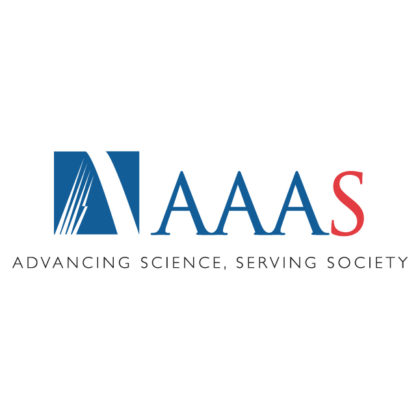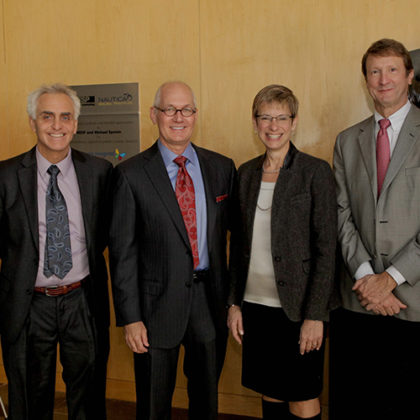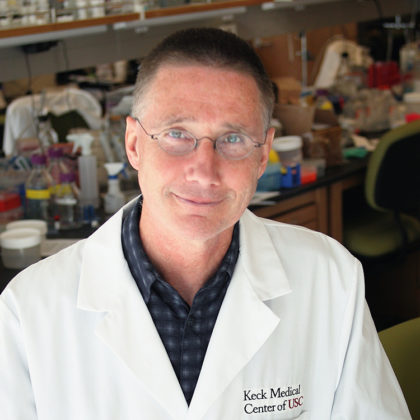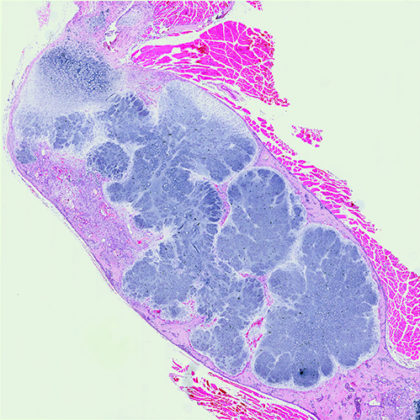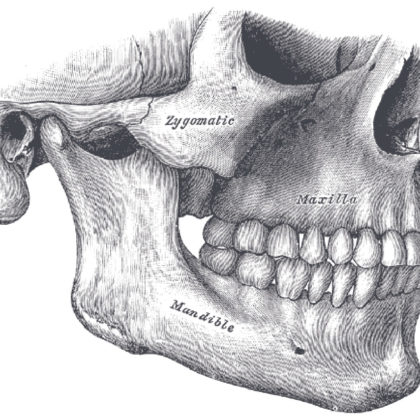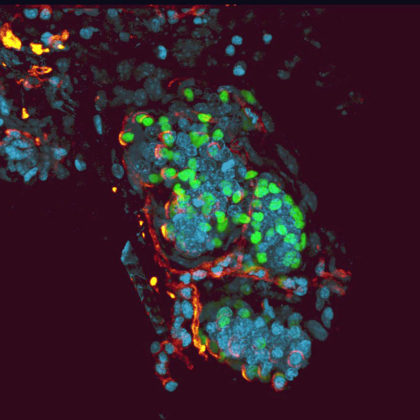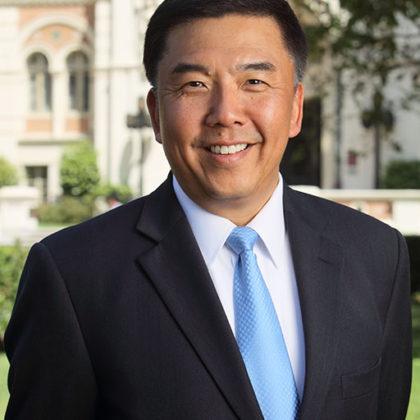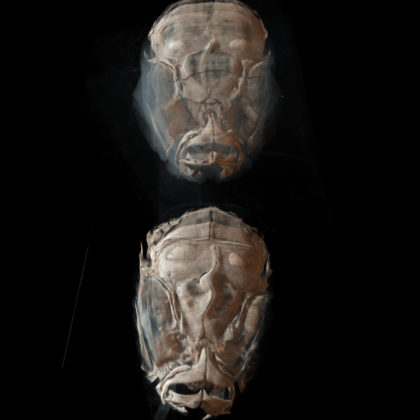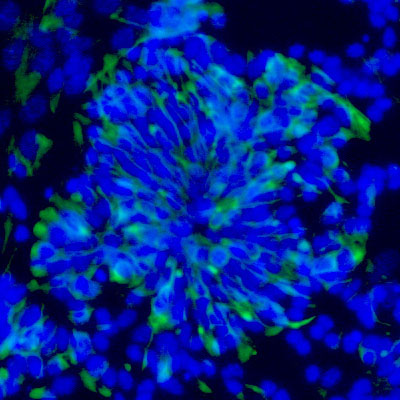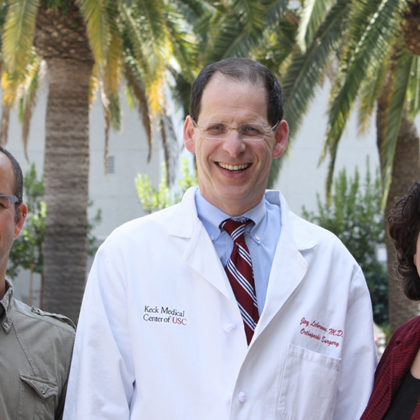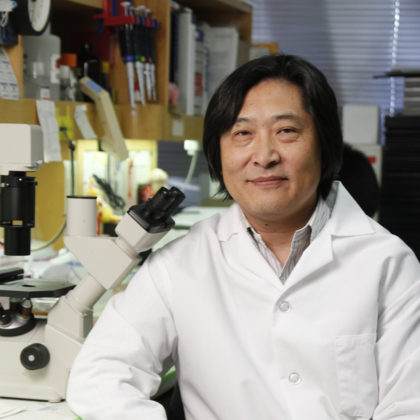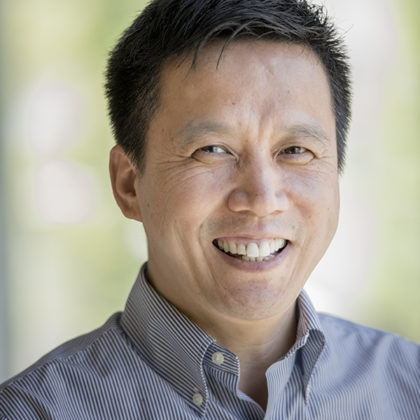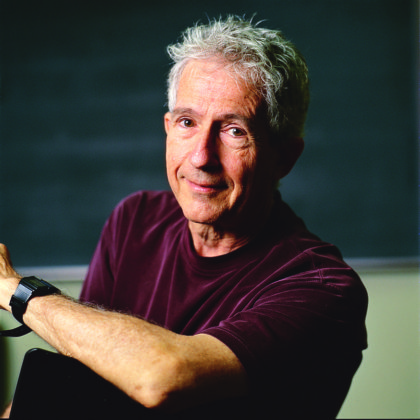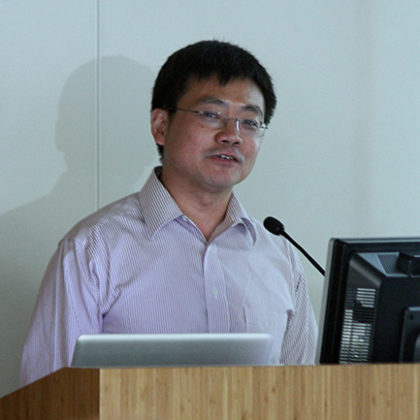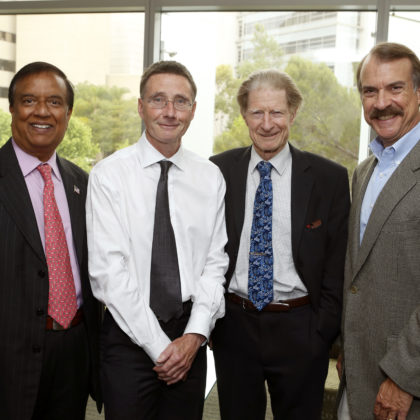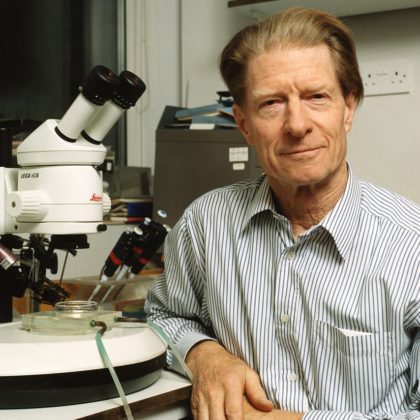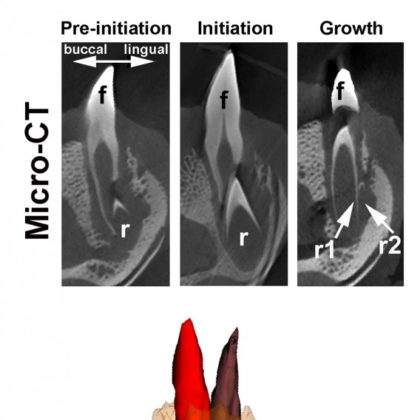Robert Maxson and five other USC professors named fellows of AAAS
Robert Maxson Jr., an executive committee member of USC Stem Cell, is one of six USC scientists to be elected fellow of the American Association for the Advancement of Science (AAAS).
USC and Children’s Hospital Los Angeles launch imaging lab for translational research
With the launch of the Translational Biomedical Imaging Lab (TBIL), investigators at the University of Southern California (USC) and The Saban Research Institute of Children’s Hospital Los Angeles moved us closer to a …
Hedgehog’s long snout finds a cure
In 1993, the Human Frontier Science Program (HFSP) funded three researchers through one of the program’s prestigious Research Grants to work jointly on patterning of the mid-hindbrain region of the vertebrate embryo. …
USC study reveals a protein that keeps people—and their skeletons—organized
Most people think that their planners or their iPhones keep them organized, when proteins such as liver kinase b1 (Lkb1) actually have a lot more to do with it. New research from …
Healthy stem cells can create benign tumors in jaw
A new study from the Ostrow School of Dentistry of USC published in Cell Stem Cell illustrates how changes in cell signaling can cause ordinary stem cells in the jaw to start …
USC researcher learns how to break a sweat
Without sweat, we would overheat and die. In a recent paper in the journal Public Library of Science One (PLOS ONE), USC faculty member Krzysztof Kobielak and a team of researchers explored …
USC researcher reveals how to better master stem cells’ fate
USC scientist Qi-Long Ying and a team of researchers have long been searching for biotech’s version of the fountain of youth — ways to encourage embryonic stem cells (ESCs) and epiblast stem …
Ostrow School study links growth factor glitch to tongue defects
New findings about how cell signaling directs tongue development may have big clinical applications for healing tongue defects, according to an Ostrow School of Dentistry of USC study published in The Journal …
Winner of the August 2013 USC Stem Cell Image of the Month Contest
Dr. Andrew McMahon and the judges of the USC Stem Cell Image of the Month contest would like to congratulate our August 2013 winners, Dr. Seth Ruffins and Sandeep Paul, a postdoc …
Businessman invests in stem cell research at USC
Chinese businessman Yong Chen has pledged $1 million to USC stem cell researcher Qi-Long Ying to support his future “eureka moments.” “When I talked to Mr. Chen, I told him that groundbreaking …
A special protein helps embryonic stem cells keep their options open
In the ongoing quest to understand how embryonic stem cells (ESCs) retain their ability to differentiate into virtually any kind of cell, USC faculty member Qi-Long Ying and a team of researchers …
USC announces winners of first Regenerative Medicine Initiative awards
Three newly assembled disease teams within USC Stem Cell will take the early steps this year that might lead to future stem-cell based therapies for certain forms of deafness, bone defects and …
Stem cells found in gum tissue can fight inflammatory disease
Stem cells found in mouth tissue can not only become other types of cells but can also relieve inflammatory disease, according to a new Ostrow School of Dentistry of USC study in …
USC study sheds light on stem cell reprogramming
Researchers are learning how to turn regular cells into stem cells, a process called reprogramming. However, some of the mechanisms of the process remain unknown, such as why only a small proportion of the cells can be reprogrammed. Researchers have at least part of the answer: the structure of genes.
Common genetic disease linked to father’s age
Scientists at USC have unlocked the mystery of why new cases of the genetic disease Noonan syndrome are so common—a mutation, which causes the disease, disproportionately increases a normal father’s production of …
USC hosts mini-symposium on musculoskeletal development and repair
With its combination of bone, muscle, joints and more, the human musculoskeletal system is a complicated tangle of connections that can be difficult to repair. That was the challenge facing a panel …
New method to treat chemo-related jaw bone necrosis
Over the last decade, osteonecrosis of the jaw (ONJ) has emerged as a devastating and debilitating condition of cancer patients receiving high doses of antiresorptive chemotherapy (bisphosphonates and denosumab). ONJ currently has …
Interview with Sir John Gurdon
Sir John Gurdon, a Nobel Prize-winning biologist whose experiments in the field of cloning laid the foundation for modern stem cell research, visited the USC Health Sciences Campus on May 16. He …
Nobel Laureate discusses history of cloning
Cells can be stubborn things. A skin cell resists changing into a liver cell, and a heart cell wants to remain a heart cell. But with the right kind of manipulation, they …
Alligator stem cell study gives clues to tooth regeneration
Alligators may help scientists learn how to stimulate tooth regeneration in people, according to new research led by the Keck School of Medicine of USC. For the first time, a global team …
